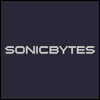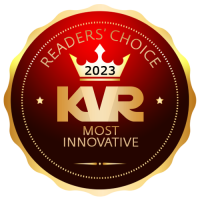
SonicBytes have announced EST, a Sampling-Groovebox VSTi initially for Windows. EST should be released next week and the pre-order price is EUR 49, after which the introductory price will be increased to EUR 59. DXi and AU versions are also planned.
The heart of EST is a 12*Multi-timbral sampler. Each sampler can be controlled either by your host, MIDI-in or the internal step-sequencer. The step-sequencer contains 128 recallable patterns, which are clearly organized in banks, programs and variations. Each pattern contains complete sequences with triggers, notes and automation-data for the 12 samplers.
Sampler
- Imports WAV and AIF with all known sub formats.
- Uses its own 32-bit-float format for setting up slots (a sample with extensions) and kits.
- Quick access via tree-menus and customizable sample-directory's.
- One shot, forward, backward, ping pong.
- Scalable root-key.
- Multi-sample support by using multiple rows and key zones (from/to).
- Keytrack-option.
- Sample-offset controllable.
- Up to 128 voices polyphony.
- Modes: Poly, Legato and Mono.
- Scalable Unison, Voice-Limit and Detune.
- Chord-mode (combinable with unison).
- Morph mode (channels are used as oscillators).
- Volume, pan and morph with inertia.
- Pitchbend (global and single) with scalable range.
- Fine-tune.
- Glide-mode (works even in poly mode) with adjustable glide-time.
- Amplitude envelope ADSR with velocity sense.
- Modulation envelope ADSR with velocity sense (can be modulated by LFO2).
- Two syncable LFOs with sin, tri, pulse, saw, saw up/down and scalable phase.
- Filter (lp, hp, bp, notch) with overdrive.
- Modulation of pitch, filter, morph and mod-adsr itself.
- Almost all parameters can be automated by the step-sequencer.
- Loop-recorder for reuse of sequences as samples or usage in other applications.
- Basic functions for mono/stereo-conversion, channel swap, normalize, gain and reverse.
- Menu option to edit and reload sample in your preferred sample-editor.
- Customizable color-schemes.
- Visualization of used patterns.
- Step-LED's for visual feedback.
- Integrated Help system.
- Support for right mouse button, wheel.
- Almost all functions are available without control/shift keys.
- Screenshots
- Preset browser.
- Scope and level display (with clip and sync indicator).
- Gain slider.
- Songinfo (opens linked web site or document).
- Sync mode (internal, host, manual).
- Key-select (auto-activation of rows regarding key-zone).
- Grid-size (piano-roll and drum-grid).
- Record velocity, delay-time and auto-step.
- Audition (editing and sample-import, velocity and gate-time).
- Host synchronization for tempo, transport.
- Inter process synchronization (mute, solo, play, record).
- Relative tempo from 1/32. to 32/1t.
- Sample accurate timing.
- 3 different Sync-modes (internal, host, manual).
- Output-port (EST can use up to 12 outputs).
- Trigger channel (active, all and 1-16).
- Route-row (trigger other rows, make custom chords, trigger multi-samples).
- Relative transpose, velocity, gate-time and delay.
- Swing affecting delay and velocity (scalable first step and interval).
- Humanization for velocity, delay and gate-time.
- Step-divide, which allows to play a row in a different tempo (adjustable divide and length).
- Bank, program and variation recall via MIDI-note.
- Start/Stop, Start, Mute/Solo, Sync.
- Row-mute.
- Navigation and editing via controllers (every single step can be controlled).
- MIDI-Learn function.
- MIDI-Thru.
- Panic.
- Transpose via MIDI-note (global and single-row).
- Free and Hold mode.
- Step and Live recording.
- Adjustable auto-step, velocity and delay.
- Built-in Loop-Recorder, Wave-export.
- Record loop to sample.
- Piano-roll and drum-grid.
- Colors can assigned to rows.
- All-rows-visible mode.
- Easy pattern editing with left/right mouse buttons.
- Cut, Copy and Paste for patterns, variations, rows and step-values.
- Undo and snapshot.
- Row rotate, reverse and random step shuffle.
- Auto-trigger, inverse and trigger-random.
- Note transpose, set to root/last note, note-random.
- Chord-progressions.
- Value increment, decrement, two value-random functions (absolute, relative).
- All functions can optionally affect all or selected steps.
- Pattern lock (run one pattern and edit another).
- Mouse sweeping for quick value drawing.
- Different random functions for notes, triggers and values.
- Rotate, reverse, transpose etc.
- Data-has-changed indicator.
- Import/Export functions for banks and single patterns.
- Tree-menus (quick access) for saved banks and patterns.
- Quick step mute/unmute.
- Magic function which produced sequences based on chords-progressions and random.
- 16 variations.
- 12 trigger rows.
- Default variation (optionally), which is automatically selected on pattern change.
- Target-parameters of the 5 automation-rows.
- Tempo (relative to host).
- Mode (free/hold).
- LFO and row-subdivide restart option (never, always, on variation or pattern change).
- First/Last step (pattern length).
- Step-row (every single step can be muted).
- Order-row (defines the actual play-order).
- Break-row (enables triggering other-patterns).
- Mute/Solo states of the trigger rows.
- 16 triggers (on/off) and a note-value and chord-descriptor.
- Velocity-row.
- Gate-row (note duration).
- Fill-row (re triggers notes automatically, different modes).
- Hits-row (used to create sub-patterns and chord-progressions).
- Delay-row.
- 5 Automation rows.
- Offset, morph, morph-time, detune, pitch, fine-tune.
- Gain, gain-time, pan, pan-time, hit-pan.
- Cutoff, resonance, drive.
- ADSR-settings of both envelopes.
- Phase of both LFOs.
- Almost all track-parameters.




